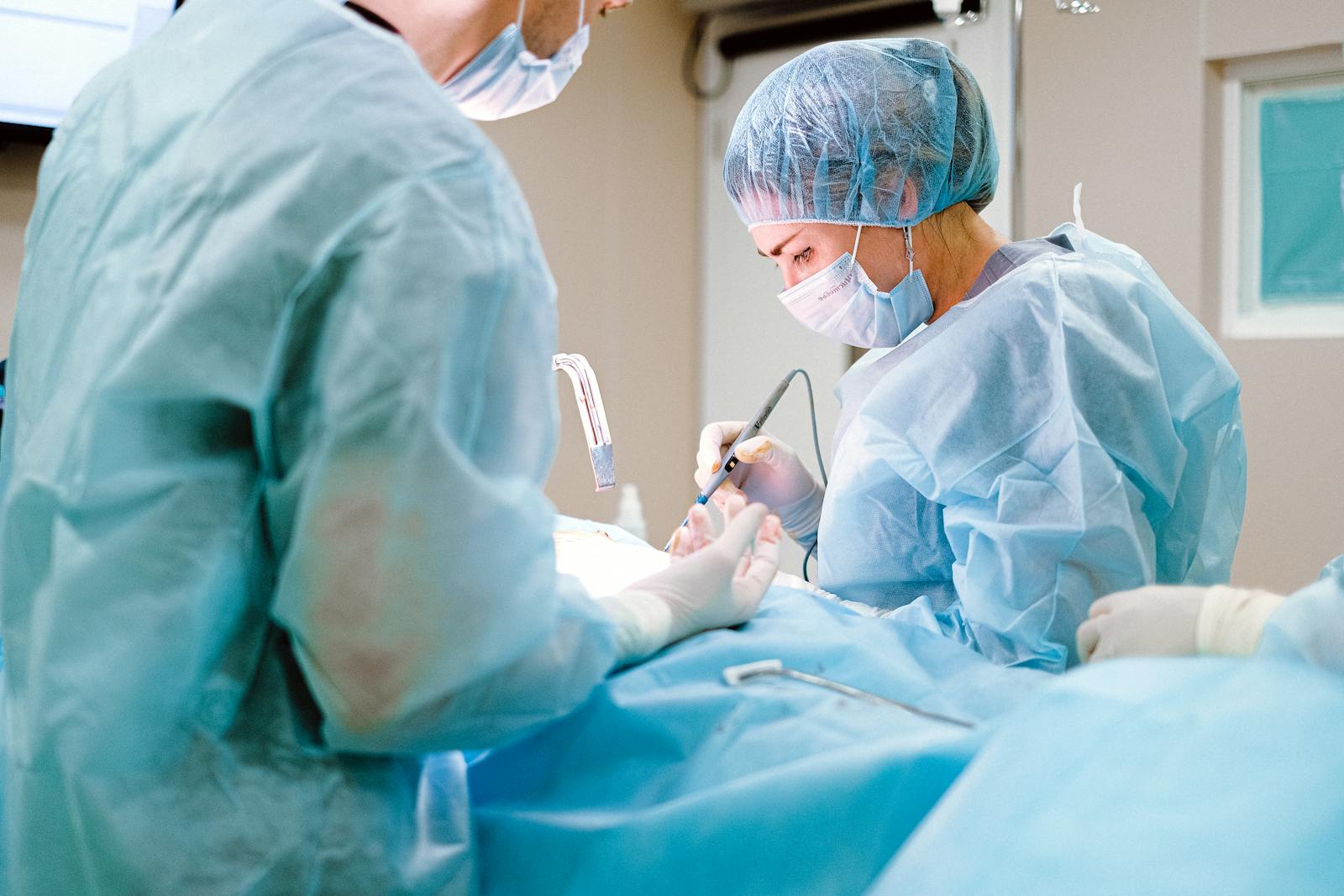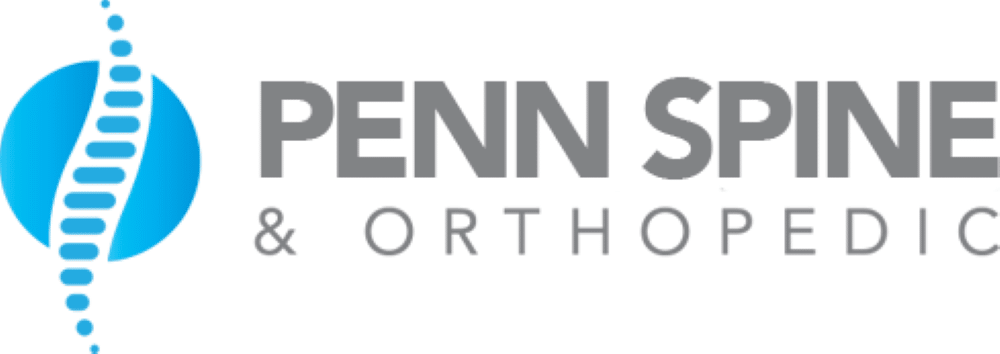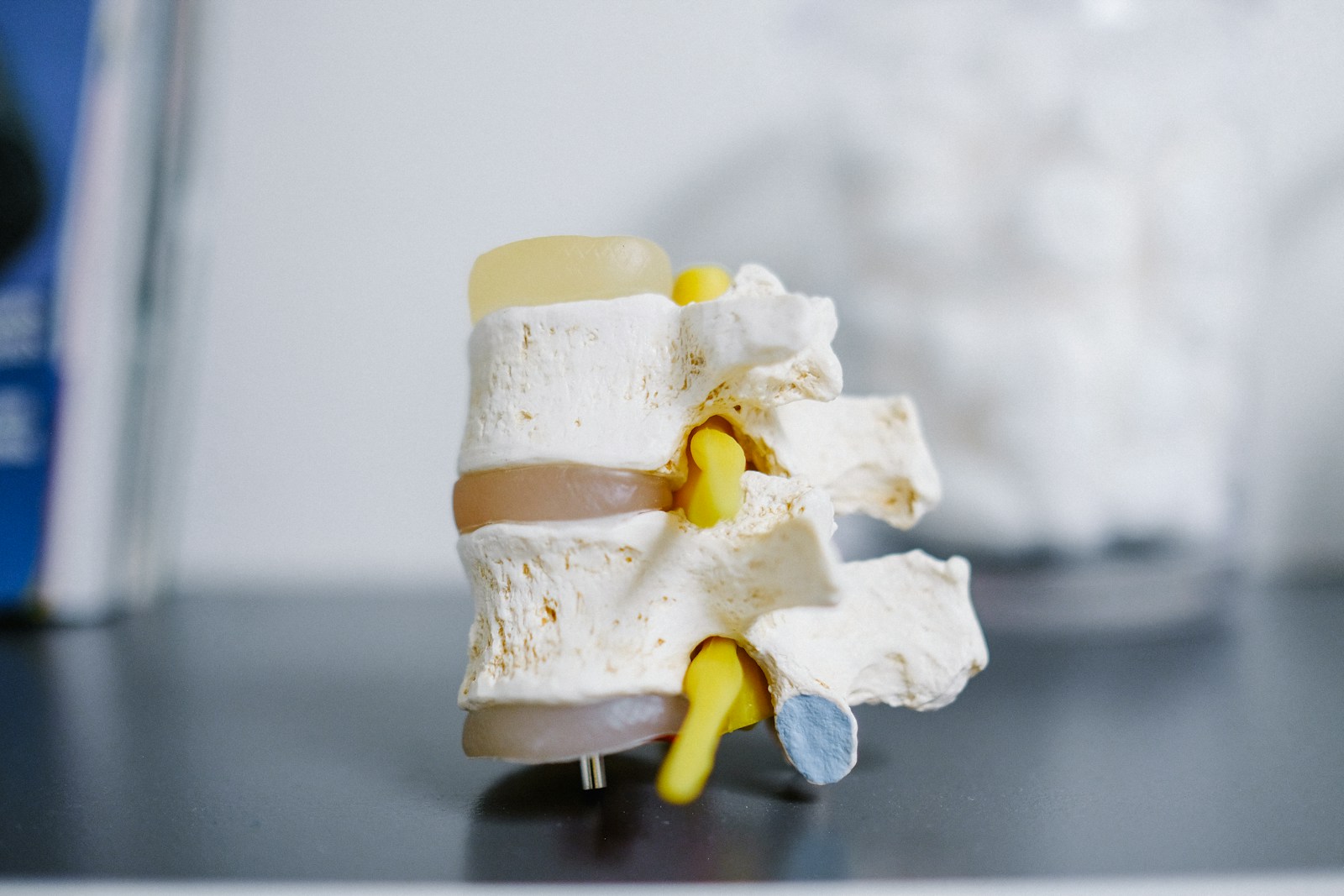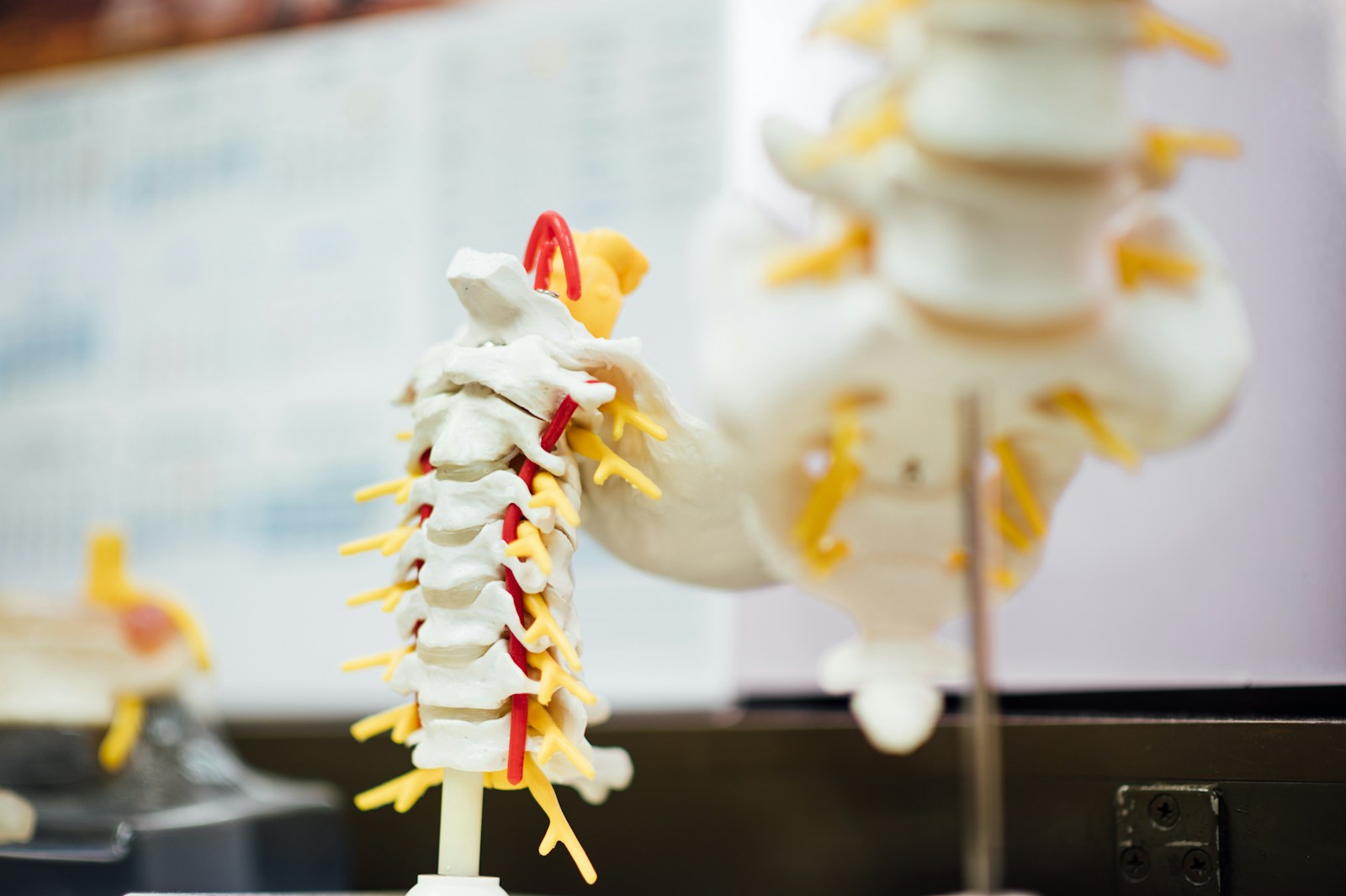In the domain of spinal health, a discectomy is a surgical procedure frequently utilized to alleviate the discomfort and pain associated with severe disc herniation. This operation involves the strategic removal of the portion of the damaged disc that is pressing against a nerve root in the spine. The question, then, is how does this process unfold, and what does it mean for those individuals considering this route? It is indeed imperative to comprehend the intricacies of this procedure, its potential risks, benefits, and the recovery process to be fully prepared for this pivotal step towards improved spinal health.
Understanding a Discectomy
A discectomy, a surgical procedure often utilized in the treatment of severe disc herniation, involves the removal of a portion of an intervertebral disc to alleviate nerve root compression and associated pain. The fundamental objective is to minimize discomfort and enhance the patient’s quality of life.
Despite its concrete definition, discectomy misconceptions abound, often leading to unwarranted fear or reluctance towards the procedure. Some misconstrue the operation as one that would drastically alter their mobility or lifestyle, which is generally not the case. A discectomy aims to relieve pain, not impose additional limitation.
Patient testimonials serve as a rich source of information, shedding light on the procedure’s effectiveness. Many patients report significant relief from pain and an improved ability to perform daily activities post-discectomy. These testimonials, however, should be viewed in the context of individual cases, considering each person’s unique health situation and recovery capacity.
Anatomy of the Spine
Delving into the complex structure of the human spine, it comprises 33 individual bones stacked one on top of another, aptly named vertebrae, which collectively play an essential role in supporting the body and protecting the spinal cord. These vertebrae are categorized into four distinct regions: the cervical, thoracic, lumbar, and sacral regions, each bearing unique structural and functional attributes that contribute to the overall Vertebral Structure and Spine Flexibility.
The cervical region, consisting of seven vertebrae, provides support to the head and allows for its diverse range of movements. The twelve thoracic vertebrae are responsible for the articulation of the ribs and provide a sturdy protective cage for the heart and lungs. The lumbar region, comprising five larger vertebrae, bears the weight of the upper body. Finally, the fused sacral and coccygeal vertebrae form the base of the spine and support the pelvic structure.
Furthermore, the spine’s flexibility, which allows for motion such as bending and twisting, is largely facilitated by intervertebral discs that act as shock absorbers between each vertebra, and the facet joints that guide the spine’s movement. This intricate design guarantees stability and movement synchronization for the human body.
Causes of Disc Herniation
While understanding the anatomy of the spine is essential, it is equally important to explore the factors leading to disc herniation, a common spinal condition that can compromise this intricate structure’s functionality. Disc herniation can occur as a result of both genetic predisposition and lifestyle factors.
Lifestyle factors such as obesity, smoking, and lack of regular exercise can increase the risk of developing disc herniation. Obesity, for instance, places additional pressure on the discs in the lower back, making them more susceptible to herniation. Smoking compromises the disc’s ability to absorb the nutrients necessary for its health, leading to disc degeneration.
Herniation prevention is vital, and it largely hinges on adopting healthier lifestyle choices. Regular exercise, maintaining a healthy weight, and cessation of smoking can significantly lower the risk of disc herniation. Proper posture, both when standing and sitting, is another critical factor in herniation prevention, as it ensures even distribution of body weight, reducing undue stress on the discs.
Understanding the causes of disc herniation is the first step in preventing this condition, thereby averting the potential need for more invasive treatments such as discectomy.
Symptoms Indicating Discectomy
The identification of symptoms is a vital step towards determining the necessity for a discectomy. It’s important to understand the pain indicators that may signal a disc herniation severe enough to warrant such a surgical procedure. In the following sections, we will explore these symptoms in detail to provide a thorough understanding of when a discectomy may be the recommended course of action.
Recognizing Discectomy Symptoms
In the domain of spinal health, it becomes important to identify the key symptoms that may indicate the need for a discectomy, a surgical procedure often used to alleviate severe disc-related back pain. These symptoms often include persistent pain, numbness, or weakness in the lower back or legs. Understanding these symptoms is essential in the decision-making process, taking into account discectomy cost factors and discectomy success rates. Patients with severe, debilitating symptoms who have not found relief through conservative treatments are typically the ones who will benefit the most from a discectomy. This procedure, while invasive, often provides significant relief, with success rates that demonstrate its effectiveness. Therefore, symptom recognition is an important step in the journey towards spinal health recovery.
Understanding Pain Indicators
How can one discern the lingering back pain from a regular strain and the serious symptoms that may indicate the necessity for a discectomy? The key lies in understanding pain indicators and employing pain management techniques. Typically, persistent and severe back or neck pain, numbness, or weakness that radiates into the limbs are strong indicators. These symptoms may worsen with physical activity or when in certain positions. Additionally, despite employing conventional pain management techniques, if the discomfort persists, it could be a sign of a more serious underlying condition requiring discectomy. Recognizing these alternative pain indicators is important, and demands professional medical advice. Hence, it is essential to consult a healthcare provider when experiencing persistent or severe pain.
Types of Discectomy Procedures
Lastly, it is important to consider that there are several types of discectomy procedures, each with its own approach and potential outcomes. These procedures include open discectomy, microdiscectomy, and endoscopic discectomy. Open discectomy, the traditional type, involves a larger incision and complete removal of the troubling disc. Microdiscectomy, a less invasive option, involves smaller incisions and the use of a microscope to view the disc and nerves. Finally, endoscopic discectomy, the least invasive method, uses a tube-like device to remove the disc through a very small incision.
Discectomy cost factors vary based on the type of procedure, the surgeon’s expertise, geographical location, and the patient’s health insurance coverage. Open discectomy is typically the most expensive due to its complexity and longer recovery time, while endoscopic discectomy may be less costly due to its less invasive nature.
Discectomy global trends indicate a steady increase in the adoption of minimally invasive procedures, such as microdiscectomy and endoscopic discectomy, due to their reduced recovery times, lower complication rates, and improved patient outcomes. These trends reflect the medical community’s ongoing commitment to patient safety and satisfaction.
The Discectomy Surgical Procedure
The discectomy surgical procedure, a delicate and meticulous process, involves several critical steps. An intricate understanding of this procedure, from the initial incision to the final suturing, can help patients comprehend its complexities and potential risks. Furthermore, a discussion of the recovery period post-surgery will provide insight into what patients can expect during the healing process.
Discectomy: Step-by-Step Process
Undergoing a discectomy involves a meticulous surgical process that aims to alleviate back pain by removing the herniated part of a disc in the spine. Discectomy advancements have streamlined this procedure, making it safer and more efficient, leading to improved patient experiences. Here is a step-by-step process of a typical discectomy:
- Anesthesia Administration: The patient is put into a deep sleep through general anesthesia.
- Incision Making: A small incision is made over the affected disc.
- Disc Exposure: The surgeon gently moves the muscles aside to expose the spine.
- Disc Removal: The herniated or damaged portion of the disc is carefully removed.
- Incision Closure: The surgeon closes the incision with stitches or surgical staples.
Each step is performed with precision to guarantee the best possible outcome.
Potential Risks and Recovery
While a discectomy can provide significant relief from back pain, it is important to be aware of its potential risks and understand the recovery process post-surgery. Potential risks include infection, nerve damage, recurrent disc herniation, and a slight chance of cerebrospinal fluid leakage. The discectomy cost can vary based on factors such as the complexity of the procedure, type of anesthesia used, and geographical location. Insurance coverage often contributes to a significant portion of the discectomy cost, but it’s vital to check with your provider. The recovery period post-discectomy usually spans several weeks, during which physical therapy may be recommended. Patient participation and adherence to post-operative care instructions play a critical role in the success of the procedure and recovery.
Preparing for a Discectomy
Planning your approach to discectomy preparation involves several key steps to guarantee excellent surgical outcomes. A well-planned discectomy diet and mental preparation play important roles in ensuring successful surgery and recovery.
Patients should adhere to the following pre-operative measures:
- Discectomy Diet: Your surgeon may recommend a specific diet or fasting regimen before the operation. This could involve adjustments to meal times or the type of food consumed to ensure your body is in peak condition for the procedure.
- Mental Preparation: Understanding the procedure, its risks, and potential benefits can help alleviate anxiety. It may be beneficial to speak with a counselor or participate in a stress management program.
- Physical Evaluation: A thorough preoperative physical examination is needed to assess your overall health status. This may include blood tests, chest X-rays, or an EKG.
- Medication Review: Discuss all medications, supplements, or over-the-counter drugs you are taking with your surgeon. Some medications may need to be discontinued prior to surgery.
- Smoking Cessation: If you smoke, it’s strongly advised to quit or cut down significantly prior to surgery to minimize postoperative complications and enhance healing.
Mindful preparation can lead to better surgical experiences and outcomes.

Post-Surgery Expectations
Following the surgical procedure of discectomy, patients begin a journey of recovery that requires understanding and managing expectations. This phase encompasses immediate recovery processes, potential post-surgery complications, and long-term healing expectations. It is important to comprehend these aspects to guarantee a smooth shift towards wellness and improved quality of life.
Immediate Recovery Process
Typically, after the discectomy procedure, patients are moved to a recovery room where their essential signs are closely monitored to guarantee immediate post-surgical complications are promptly addressed. The immediate recovery process involves some important factors for a successful outcome:
- Emphasis on emotional health post discectomy: It’s vital for patients to maintain a positive mindset and address any emotional distress to facilitate recovery.
- Discectomy diet considerations: Eating a balanced diet rich in protein and vitamins to promote healing.
- Pain management: The use of prescribed medications to alleviate post-operative discomfort.
- Mobility: Encouraging light movements to prevent stiffness and promote blood circulation.
- Follow-up appointments: To assess healing progress and address any concerns promptly.
Adherence to these guidelines can greatly enhance the recovery process post-discectomy.
Potential Post-Surgery Complications
While adherence to recovery guidelines greatly enhances the healing process, it is equally important to contemplate the potential complications that may arise after a discectomy procedure. Infection is a primary concern post-surgery; hence, proper infection prevention measures, such as wound care and good hygiene, are essential. Medication management is also critical in mitigating pain and reducing the risk of blood clots. However, some patients may experience side effects, including nausea, constipation, or allergic reactions. Other potential complications include nerve damage, persistent pain, or spinal fluid leaks. These risks underscore the importance of thorough post-operative care plans and regular check-ups. Do not hesitate to report any unusual symptoms to your healthcare provider immediately.
Long-Term Healing Expectations
In the aftermath of a discectomy procedure, patients often find themselves with a myriad of expectations about the long-term healing process and its potential impact on their quality of life. The following points provide an insight into some of these expectations:
- Long-lasting pain relief: This is usually the primary expectation, often achieved after the healing process.
- Improved mobility: Patients anticipate a restoration of their normal range of motion.
- Discectomy cost analysis: Patients expect a clear understanding of the financial implications of the procedure.
- Return to daily activities: Patients usually expect to resume their regular activities post-healing.
- Psychological impact post-discectomy: Patients should be prepared for potential emotional stress.
These expectations can vary greatly, and it’s important for individuals to discuss their personal expectations with their healthcare provider.
Risks and Complications
Exploring the potential risks and complications is a crucial part of understanding the discectomy procedure. When selecting a surgeon, it is essential to evaluate their experience and success rate in performing discectomies, as well as their approach to managing potential risks. Surgical complications can include infection, nerve damage, spinal fluid leaks, and in rare instances, paralysis. A thorough discussion with your surgeon can help you comprehend these risks and make an informed decision.
Discectomy insurance coverage varies greatly by policy and provider. It’s crucial to clarify what your insurance will and won’t cover before undergoing the procedure. This includes understanding potential out-of-pocket costs for both the surgery itself and any necessary follow-up care.
Another risk factor to take into account is the possibility of failed back surgery syndrome (FBSS), a chronic pain condition that can occur when a spinal surgery does not result in the expected reduction in pain. While discectomy generally has a high success rate, FBSS is a possible complication.
In the end, understanding the risks of discectomy can help you make informed decisions about this procedure. Even with its potential complications, discectomy has provided relief for many people suffering from debilitating spinal conditions.
Rehabilitation and Recovery
Post-operative rehabilitation and recovery are pivotal aspects of the discectomy process, often determining the procedure’s ultimate success and the patient’s return to a pain-free life. The process involves a well-structured plan that usually incorporates post-surgery nutrition and therapeutic exercises, among other strategies.
The program’s primary goal is to reinstate the patient’s mobility, strength, and overall functionality. Below are the key components of a typical post-discectomy rehabilitation and recovery plan:
- Post-Surgery Nutrition: Adequate nutrition is essential in promoting healing and recovery. Consuming a balanced diet rich in proteins, vitamins, minerals, and hydration can have a significant impact on the recovery process.
- Therapeutic Exercises: Physical therapy, including a range of motion, strengthening, and stretching exercises, aids in restoring back and leg mobility and function.
- Pain Management: This involves medication, heat or cold therapy, and other techniques to manage post-surgical discomfort.
- Regular Follow-ups: Patients need to attend follow-up appointments to monitor progress and adjust treatment plans as necessary.
- Psychological Support: Emotional wellbeing is crucial in recovery. Counseling or support groups can help patients cope with post-surgical stress and anxiety.
Alternatives to Discectomy
While discectomy is a commonly performed surgical procedure to alleviate spinal discomfort, several alternative treatments are available that may provide comparable relief. Non-surgical treatments, for instance, can be just as effective in certain cases. These alternatives include medication, physical therapy, and spinal injections.
Medications like nonsteroidal anti-inflammatory drugs (NSAIDs), muscle relaxants, and opioids can help manage pain and inflammation. Spinal injections, on the other hand, are used to help decrease inflammation and nerve irritation.
Physical therapy, or physiotherapy, is another non-surgical alternative. Physiotherapy benefits are manifold: it improves flexibility, strengthens muscles, enhances posture, and helps maintain a healthy weight, thereby reducing the strain on the spine. Through a combination of exercises, stretches, and other treatments, physiotherapy can help alleviate pain and restore normal function.
While these alternatives may not be suitable for all patients, particularly those with severe conditions, they offer potential benefits without the risks and recovery time associated with surgery. It is important for patients to discuss all potential treatment options with their healthcare provider to determine the best course of action based on their specific condition and needs.
Frequently Asked Questions
What Is the Average Cost of a Discectomy Procedure?
The average cost of a discectomy procedure varies, typically ranging from $15,000 to $50,000. Factors influencing this cost include the complexity of the surgery, discectomy recovery time, and potential post-surgery complications.
Is a Discectomy Covered by Health Insurance?
Coverage for a discectomy by health insurance varies by provider and plan. Typically, if deemed medically necessary, the surgery, discectomy recovery time, and post-care may be covered. It’s prudent to verify with your insurer beforehand.
How Frequently Is a Discectomy Procedure Performed Globally?
The frequency of discectomy procedures globally varies due to factors such as availability of discectomy alternatives and potential discectomy complications. However, it is commonly performed for severe cases of disc-related spinal issues.
What Is the Success Rate of a Discectomy Procedure?
The success rate of a discectomy procedure varies but generally exceeds 80%. Post discectomy rehabilitation plays a vital role in recovery, while potential discectomy complications can influence the overall success rate.
Are There Any Technological Advancements in Discectomy Procedures?
Yes, technological advancements have indeed improved discectomy procedures. Innovations include minimally invasive techniques, laser discectomy, and enhanced post-operative technology to aid recovery and minimize potential complications.


